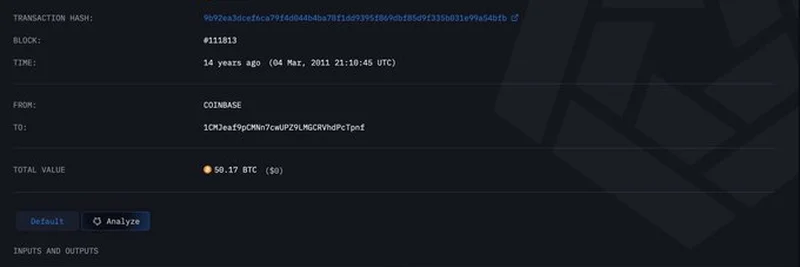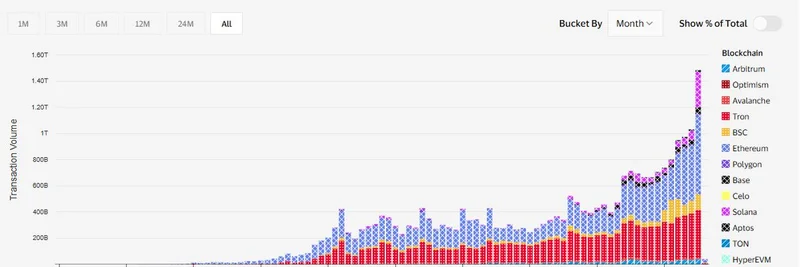Hey there, crypto enthusiasts! If you’ve been keeping an eye on the blockchain world, you’ve probably heard the buzz about a massive Bitcoin movement that’s got everyone talking. On July 4, 2025, MartyParty (@martypartymusic) dropped a bombshell on X, revealing a deep dive into the origins of some 2011 Bitcoin wallets that recently consolidated a whopping 80,000 BTC. Let’s break it down and explore what this means for the crypto community.
The Genesis of the Whale Wallet
The highlight of MartyParty’s post is a screenshot from a transaction explorer, showcasing the oldest transaction in this chain, dated March 4, 2011. This transaction, marked with a "COINBASE" label, moved 50.17 BTC and is tagged as 14 years old. For those new to crypto, "COINBASE" here doesn’t refer to the popular exchange (which was founded in 2012) but rather to the original mining reward in Bitcoin’s blockchain. This means the BTC was freshly mined back in the early days of Bitcoin, making this wallet a potential "Genesis-tier" artifact.
The image shows a non-clickable "COINBASE" wallet, hinting that it might be an original address from Bitcoin’s infancy. MartyParty even tagged @arkham, a blockchain analytics firm, to confirm this detail. If true, this could point to an early miner or one of Bitcoin’s pioneers waking up after years of dormancy.
Why This Matters
So, why is everyone so excited about 80,000 BTC moving? In the crypto world, individuals or entities holding large amounts of Bitcoin are called "whales." These whales can influence market prices and liquidity with their trades. A wallet from 2011 holding this much BTC suggests it belonged to someone who mined it when Bitcoin was worth mere cents. Today, with Bitcoin’s value soaring, that 80,000 BTC could be worth billions, depending on the current market rate.
The recent consolidation—where these old wallets’ funds were moved to a new address—has sparked wild speculation. Is it a long-dormant miner cashing out? Or could it be a strategic move by a major player? The timing, just days after a significant event like the BBB (Build Back Better) signing mentioned in the thread, adds another layer of intrigue.
Theories and Speculation
The X thread is buzzing with theories. Some users, like @djay2001, suggest it could be Roger Ver, a well-known early Bitcoin adopter who renounced his U.S. citizenship in 2014. Others point to Richard Heart or even Satoshi Nakamoto himself (or a government entity, as @Crypto_bn jokingly speculated). There’s also chatter about a hacked lost wallet, given the history of early Bitcoin thefts.
One key point of confusion is the "COINBASE" label. As @TexasBryan clarified, this refers to mined coins, not the Coinbase exchange, which didn’t exist in 2011. This distinction is crucial, as it rules out exchange-related activity and points to a pure, untraceable origin.
What’s Next?
For now, the crypto community is watching closely. The lack of exchange hops or traceable tags, as noted by @StubeStrong, suggests this isn’t a typical sell-off. It could be an internal reorganization, a whale preparing for a big move, or even a historical figure re-entering the game. MartyParty’s call for @arkham to analyze further could provide clarity, so keep an eye on updates from that front.
At Meme Insider, we’re all about helping you stay ahead in the blockchain game. Whether you’re a practitioner or just curious, understanding these whale movements can sharpen your knowledge of crypto dynamics. What do you think—will this 2011 wallet shake up the market? Drop your thoughts in the comments, and let’s decode this mystery together!


